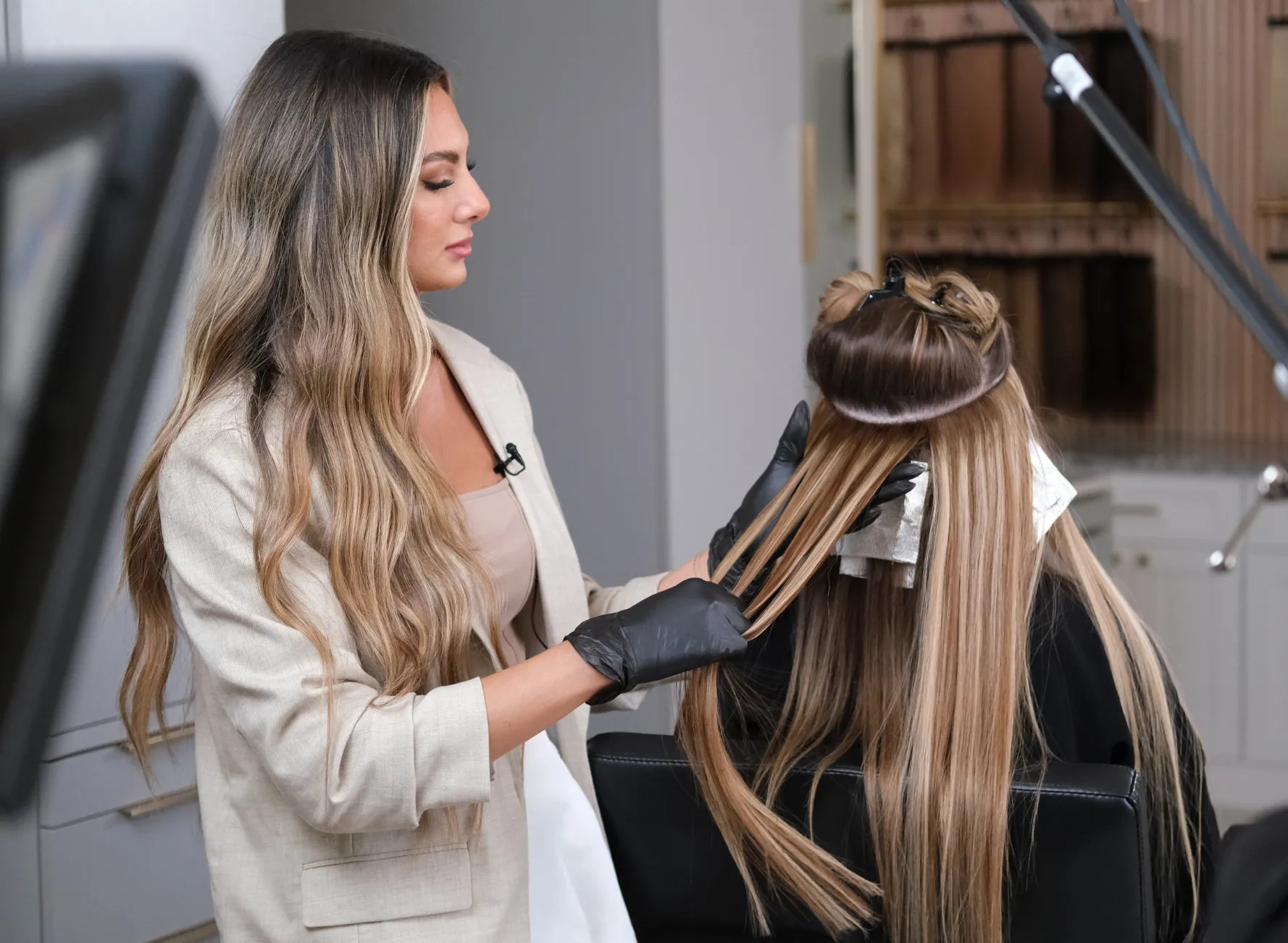As a hairstylist, you are responsible for creating stunning hairstyles that complement your client's facial features. One way of achieving this is by using hair extensions. Apart from giving clients the length and volume they desire, hair extensions courses also add versatility to your styling repertoire.

However, knowing how to apply hair extensions correctly takes more than just purchasing and fixing them on your client's hair. A comprehensive understanding that includes the types of hair extensions, their application methods, and how to maintain them is essential. That's why this blog post covers a comprehensive course that will help you master the art of hair extensions.
Types of Hair Extensions
Hair extensions come in different types, each with its unique properties and application techniques. Understanding these types will help you determine the best fit for your client.
- Clip-In Extensions: These extensions come with secure clips that attach the added hair temporarily to the client's natural hair. They are easy to apply and remove and are ideal for creating instant volume and length.
- Tape-In Extensions: These extensions are flat and come with a double-sided tape designed to stick to the client's natural hair. Tape-in extensions are more durable than clip-in extensions but require professional application and removal.
- Fusion Extensions: Fusion extensions involve melting a keratin tip onto the client's hair using a special tool. The result is a natural-looking, long-lasting, secure extension. However, they take longer to apply and require a high level of skill.
Application Techniques
The technique you use to apply hair extensions is critical. A poorly applied extension not only looks unprofessional but also can fall out easily or damage the client's natural hair when removed. Here are three special techniques to consider.
- Sew-In Technique: This technique involves braiding the client's natural hair into cornrows and sewing the extensions onto the braids. Sew-in extensions provide a secure, long-lasting hold and work well on clients with strong, thick hair.
- Micro-Ring Technique: This technique involves attaching the extensions using small metal rings lined with silicone. The silicone cushion protects the client's hair from damage, and the extensions can be easy to remove without causing stress. They are ideal for clients with medium-thickness hair.
- The Tape-In Technique: As explained earlier, this technique involves attaching flat, wefted extensions using a double-sided tape. The sticky side attaches to the client's natural hair, while the other side holds the weft in place. The tape-in technique is ideal for clients with fine or thin hair.
Aftercare and Maintenance
Aftercare and maintenance are essential to prolonging the life of hair extensions. As a stylist, you should educate your clients on the best maintenance practices. Here are some suggestions:
- Always brush hair extensions thoroughly before going to bed to minimize tangling.
- Use sulfate-free shampoo to clean the hair extensions and ensure they stay healthy-looking.
- Conditioning hair extensions is essential to maintain their softness and manageability. Use leave-in conditioners specifically designed for hair extensions.
- Avoid excessive heat styling that can weaken the extensions or damage the natural hair underneath.
Advancements in the Hair Extension Industry
The hair extension industry is always advancing, and staying on top of emerging trends will put you ahead of your competitors. Stay informed on new hair extension fads and how to incorporate them into your offerings. You can consider specializing in new products, such as clip-in hair extensions or halo extensions, which are taking the industry by storm.
Conclusion:
The art of hair extensions is an exciting and constantly evolving part of the hairstyling industry. With this comprehensive course, you can master the basics of hair extensions, learn the latest techniques, and stay up to date with new advancements in the industry. With the right training, you can provide quality and beautiful hair extensions that exceed your clients' expectations every time!
 icons at the top right corner of the subsection.
icons at the top right corner of the subsection.